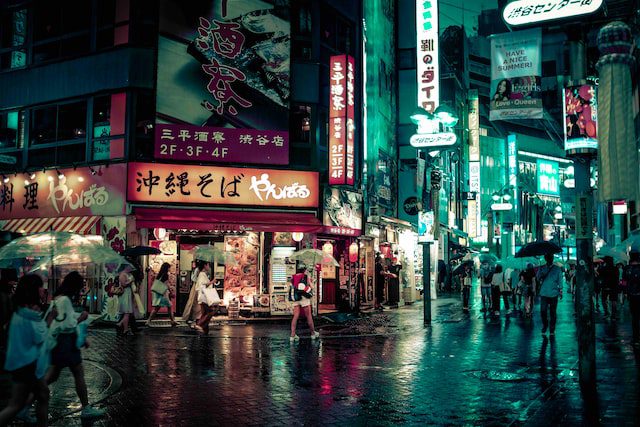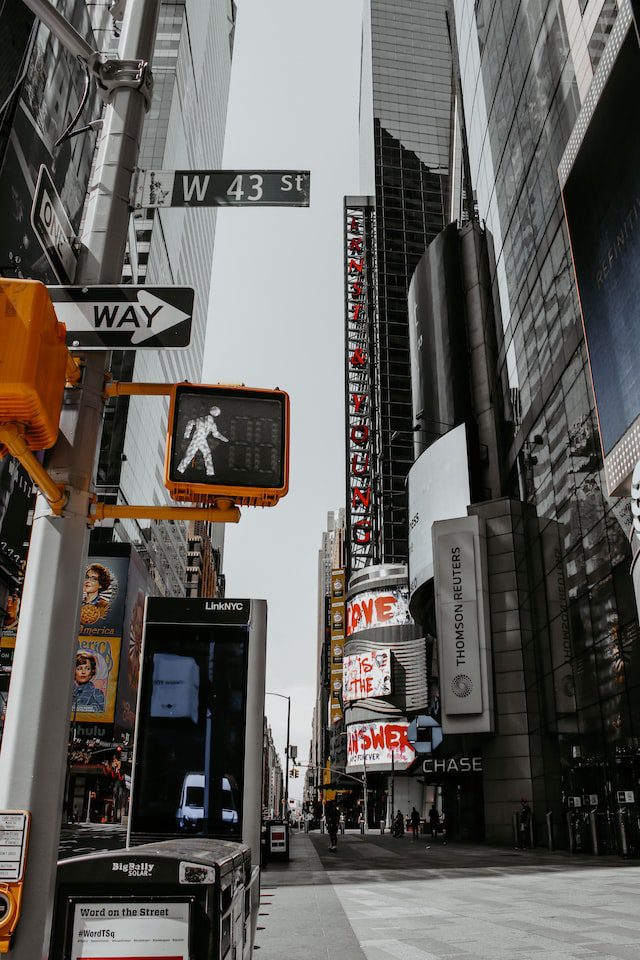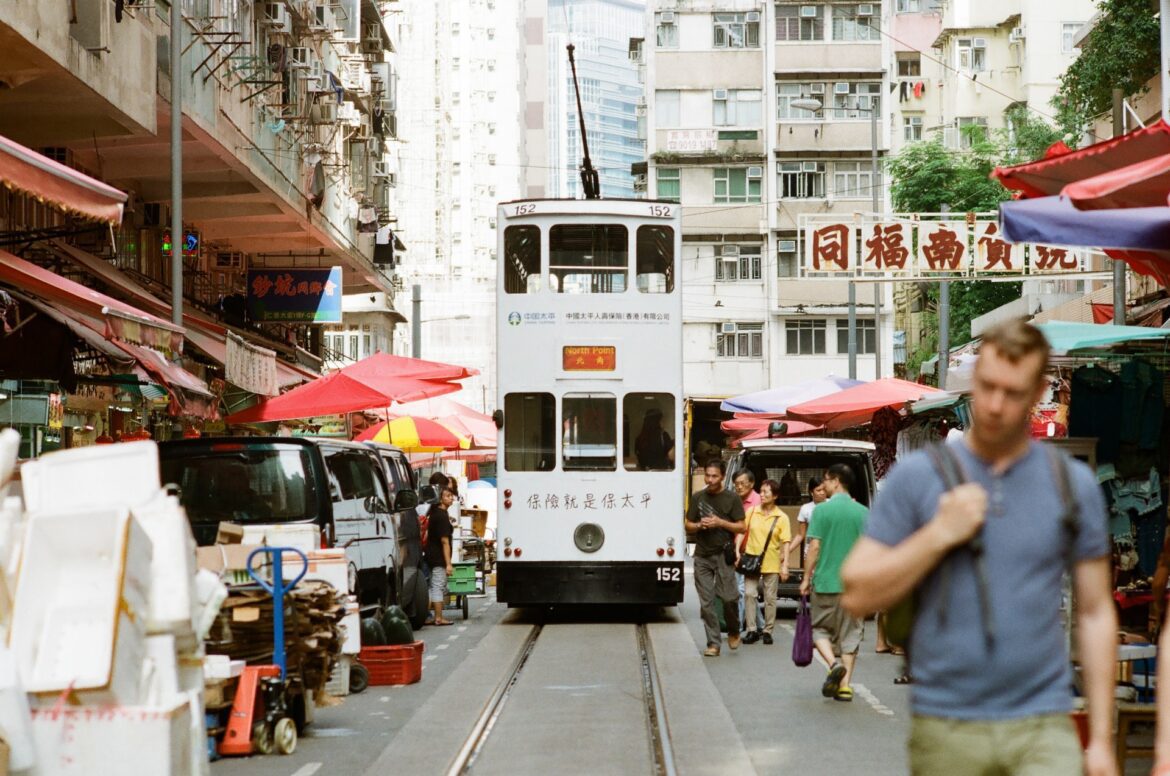Urban Photography vs Street Photography: What’s The Difference?
Featured Photo by Joseph Chan on Unsplash
Photography has come a long way since the days of analog cameras and film. With digital technology, we now have access to powerful tools that can be used to capture stunning imagery. And one of the most popular branches of photography is urban and street photography. But what is the difference between these two genres? This article will explain what separates them, as well as provide tips and advice on how to best capture stunning images within both types of photography. Read on to learn more about urban photography vs street photography and how they differ.
But before we dive in – Is urban and street photography the same? No, they are not the same. Street photography is a type of photography that captures everyday life in public places. It is usually candid and can be either posed or un posed. Urban photography is a type of photography that focuses on the built environment of cities and towns. It can include both man-made structures and natural features.
To clarify, urban photography focuses on the architecture and design of cities, giving viewers a sense of the built environment. By capturing images of buildings, roads and other structures, urban photographers aim to show how these elements shape our lives. On the other hand, street photography is more about people than places. It captures life in motion – often candidly – to reflect human emotion and behavior in everyday life. Street photographers attempt to capture fleeting moments that give insight into how we live today.
What is street photography?

Urban Photography vs Street Photography – Street Photography – Photo by Alex Knight on Unsplash
Street photography is a type of photography that captures everyday life in public places. It can be candid or posed, and it can be shot with a digital or film camera. Street photography is often thought of as an offshoot of documentary photography, as it captures real-life moments and scenes.
Street photographers typically don’t ask permission to take someone’s photo, as they want to capture natural reactions and interactions. This can sometimes lead to conflict, but street photographers believe that the photos they take are worth any hassle.
The best street photographs are those that show a slice of life, a moment that wouldn’t have been captured otherwise. They offer a glimpse into the human condition, and they tell stories about the people who inhabit our cities.
What is urban photography?

Urban Photography vs Street Photography – Urban Photography – Photo by Jakayla Toney on Unsplash
Urban photography is the art of taking pictures of city life. It can be anything from photographing the skyline to capturing the energy of a busy street corner. Urban photography often has an edgy, gritty feel to it that can add excitement and drama to your shots.
Street photography, on the other hand, is more about capturing candid moments and everyday life. While you can certainly take street photos in an urban setting, the focus is more on the people than the environment. Street photography can be challenging because you have to be quick on your feet and ready to capture those fleeting moments.
The difference between the two
When it comes to photography, there are many different styles that photographers can choose from. Two popular genres of photography are urban photography and street photography. So, what’s the difference between the two?
Urban photography is a genre of photography that focuses on capturing the cityscape. This can include everything from tall buildings and skyscrapers to busy streets and alleyways. Urban photographers often try to capture the feeling of the city, whether it’s the hustle and bustle of a busy metropolis or the more relaxed vibe of a smaller town.
Street photography, on the other hand, focuses on capturing everyday life in public places. This can include anything from people walking down the street to someone sitting on a park bench. Street photographers often try to capture candid moments or emotions in their photos.
So, which one is right for you? If you’re interested in photographing cities and urban landscapes, then urban photography is probably a good fit for you. If you’re more interested in capturing everyday life and human interactions, then street photography might be a better option.
What’s better street or urban photography?
There are a few key differences between street and urban photography. For one, street photography is typically more candid, while urban photography may involve more posed shots. Street photography also tends to focus on everyday life and culture, while urban photography may be more about the architecture and design of the cityscape.
So which is better? It really depends on your personal preferences. If you like candid shots that capture the essence of daily life, then street photography may be for you. If you prefer a more polished look with cityscape photos that showcase the beauty of urban architecture, then urban photography may be your style. Ultimately, it’s up to you to decide what type of photography you prefer.
The Golden Question – Which one is right for you?

Urban Photography vs Street Photography – Which One To Pick – Photo by Jorik Kleen on Unsplash
If you’re drawn to photographing cityscapes and architecture, urban photography may be the right genre for you. If you prefer candid shots of people in their natural surroundings, street photography could be a better fit. There are no hard and fast rules, however, and many photographers enjoy shooting both types of images. Ultimately, the best way to decide which genre is right for you is to experiment with both and see what resonates most.
The Pros and Cons of Street Photography
There are both pros and cons to street photography. On the one hand, it can be a great way to capture the energy and vibrancy of a cityscape or urban environment. Street photography can also be very candid and unposed, giving you a unique glimpse into the lives of strangers. On the other hand, street photography can be quite intrusive, and you may end up getting some unwanted attention from your subjects. It’s important to weigh the pros and cons before deciding whether or not street photography is right for you.
The Pros and Cons of Urban Photography
There are many different styles of photography, and urban photography is just one of them. While some photographers may lump urban and street photography together, there are actually some distinct differences between the two. Here, we will take a look at the pros and cons of urban photography to help you decide if it’s right for you.
PROS
1. You can find interesting subjects no matter where you go.
2. There is always something new to photograph in the city.
3. You can get unique shots that you can’t get anywhere else.
4. It’s a great way to document your life in the city.
5. You can meet new people and make new friends while shooting photos.
CONS
1. The city can be a dangerous place, so you need to be aware of your surroundings at all times.
2. It can be difficult to get good shots without being disruptive or intrusive.
3. You may get hassled by the police or other people while shooting photos.
4. It can be hard to find parking and good locations to shoot in the city.
5. You may have to deal with a lot of noise, crowds, and other distractions while shooting.
7 Tips for Urban Photographers

Urban Photography vs Street Photography – 7 Tips for Urban Photographers – Photo by Tan Kaninthanond on Unsplash
1. Look for interesting architecture and patterns in the cityscape.
2. Pay attention to the light and how it changes throughout the day.
3. Find a good vantage point to get a different perspective of the city.
4. Capture the energy and movement of the cityscape.
5. Seek out interesting people and characters in urban environments.
6. Use long exposures to create unique effects with city lights.
7. Experiment with different camera techniques to add your own personal touch to your urban photography.
7 Tips for Street Photographers
If you love photography and enjoy being out and about in the city, chances are you’ve wondered about the difference between urban photography and street photography. While both genres capture images of life in the city, there are some key distinctions that set them apart. Here are 7 tips for street photographers to help you get started:
1. Get close to your subjects. Street photography is all about capturing candid moments and emotions, so it’s important to be up close and personal with your subjects.
2. Be patient. The best street photographs often capture spontaneous moments that can’t be planned or staged. So be patient, keep your eye out for those special moments, and be ready to click the shutter at a moment’s notice.
3. Don’t be afraid to experiment. There are no rules in street photography, so don’t be afraid to experiment with different techniques and compositions.
4. Pay attention to the light. Good lighting is essential for any type of photography, but it can be especially important in street photography where contrast can really make an image pop.
5. Look for interesting details. In addition to capturing people, street photography also captures the little details that make up the fabric of everyday life in the city. Keep your eyes peeled for interesting patterns, textures, and shapes as you wander the streets.
6. Incorporate leading lines into your composition. Leading lines are a powerful composition tool that can help draw the viewer’s eye into the photograph. Look for streets, sidewalks, pathways, or other lines in the scene that you can use to create interesting compositions.
7. Have fun! Street photography is all about capturing life in the city, so don’t forget to enjoy yourself as you explore the streets and search for those perfect shots.
What camera and lens is recommended for Street Photography?
There isn’t one definitive answer to this question as different photographers have different preferences when it comes to cameras and lenses for street photography. However, many street photographers prefer to use smaller, lighter cameras that are easy to carry around and inconspicuous, such as mirrorless cameras or rangefinder cameras.
As for lenses, wide-angle lenses are popular for street photography as they allow you to capture a wider field of view, which can be helpful when photographing in tight spaces or when you want to include a lot of the environment in your shots. Prime lenses (lenses with a fixed focal length) are also popular among street photographers as they tend to be lighter and more compact than zoom lenses, and many prime lenses have a wide aperture that allows for better low-light performance and shallow depth of field (which can be useful for isolating subjects).
What camera and lens is recommended for Urban Photography?
There is no definitive answer when it comes to what camera and lens is best for urban photography. It really depends on the style of urban photography you are trying to achieve. For example, if you are wanting to capture more candid moments, a smaller camera body with a fast prime lens might be your best bet. However, if you are wanting to shoot grand cityscapes, a larger DSLR or mirrorless camera body with a wide-angle lens would be better suited. Ultimately, it is up to the photographer to decide what gear will work best for them and their style of shooting.
Last Shutter Thoughts
To wrap it up, urban photography and street photography are two very different disciplines in the world of art. While both genres focus on capturing life’s everyday moments, how those moments are captured varies from one genre to another. Street photographers capture candid images that tell stories about the people, places, and cultures around them while urban photographers take a more artistic approach by utilizing leading lines and visual elements to create stunning photographs. No matter which style you choose, making sure you have fun with your creativity is key!
HEY BEAUTIFUL PEOPLE! Did you enjoyed this article – Urban Photography vs Street Photography? What are your thoughts? What do you prefer, urban or street photography? Please leave us your comments below. Don’t forget to check other great articles such as 9 Different Genres Of Photography And Why You Should Learn About Them.


